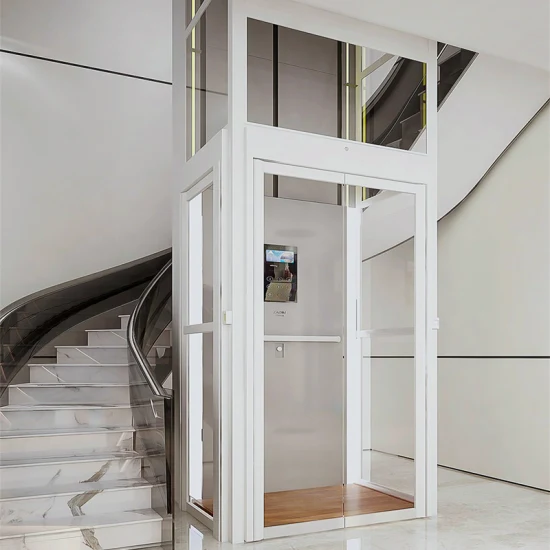Budget Friendly Lift Repair Near Me: Specialist Technicians at Your Service
Budget Friendly Lift Repair Near Me: Specialist Technicians at Your Service
Blog Article
Delving Into the Globe of Elevators: Typical Issues Encountered by Various Lift Devices
As we navigate via the vertical transportation systems of modern structures, elevators stick out as an essential part of our day-to-days live. Nonetheless, behind their seamless procedure exists a world of detailed systems that can in some cases run into obstacles. From hydraulic elevators to grip systems and machine-room-less designs, each lift kind features its set of typical concerns. Comprehending these obstacles is essential for making certain the smooth functioning of these important systems. Let's check out the intricacies that underlie the procedure of elevators and the prospective concerns that can emerge, clarifying the complex internet of lift mechanisms.
Hydraulic Elevators
Hydraulic elevators, typically favored for low-rise structures, make use of fluid pressure to control the movement of the elevator cars and truck (lift repair companies). This system includes a hydraulic pump pressing oil right into a cyndrical tube, causing the lift to relocate the desired direction. While hydraulic lifts are recognized for their quiet and smooth operation, they do come with their own set of usual problems
One prevalent problem with hydraulic elevators is oil leakage. The seals in the hydraulic system can wear out over time, resulting in oil seepage. This not only creates a mess but can additionally influence the lift's efficiency if left unaddressed. Furthermore, problems with the control system, such as defective valves or a malfunctioning pump, can create disturbances in the lift's activity.
Normal maintenance and prompt fixings are crucial to make certain the smooth functioning of hydraulic elevators. By addressing these typical problems proactively, structure owners can decrease downtime and ensure the safety and security and efficiency of their vertical transportation system.
Traction Elevators
When considering upright transportation systems in structures, an additional usual type apart from hydraulic lifts is the traction elevator. Traction lifts operate using a system of ropes and weights that move the lift vehicle by clutching onto the hoist ropes. This system allows for smoother and quicker upright transportation contrasted to hydraulic systems.
One of the usual issues encountered by traction lifts is rope wear. The constant motion of the ropes within the grip system can result in tear and wear with time, potentially triggering the lift to malfunction or come to be hazardous for usage. Normal evaluations and upkeep of the ropes are important to make sure the elevator's proper performance and safety and security.
Another problem that grip elevators may come across is associated with the control system. Problems with the control system can cause concerns such as erratic motion, hold-ups in feedback times, or even total closures. Normal testing and maintenance of the control system are important to stop such issues and guarantee the lift's integrity.
Machine-Room-Less (MRL) Lifts

Among the crucial components of MRL elevators is the portable gearless grip equipment that is set up within the hoistway. This machine effectively drives the elevator automobile without the requirement for cumbersome tools found in typical traction lifts. Furthermore, MRL lifts usually make use of a counterweight system to stabilize the automobile, more enhancing their power efficiency.
In spite of their benefits, MRL elevators may deal with obstacles associated with repair and maintenance because of the constrained room for equipment setup. Availability for servicing parts within the shaft can be restricted, requiring specialized training for specialists. Appropriate maintenance routines and routine examinations are crucial to guarantee the continued smooth operation of MRL elevators.
Overloading and Weight Limit Issues
Are elevators geared up to manage excess weight tons effectively and safely? Overwhelming and weight limitation problems are vital worries in lift operations. Elevator producers design lifts with specific weight capacities to ensure guest safety and security and tools long life. Surpassing these weight restrictions can bring about numerous troubles, consisting of mechanical failures, delays, and safety threats.
When elevators are strained, it places extreme strain on the electric motor, cords, and other elements, potentially creating breakdowns or breakdowns. Safety devices such as sensors and overload sensing units remain in place to stop elevators from relocating if they find excess weight. Additionally, dig this exceeding weight restrictions can result in enhanced energy consumption and wear and tear on the elevator system.
To mitigate overwhelming problems, developing managers must plainly display weight restrictions in lifts and enlighten residents on the importance of sticking to these limitations - lift repair companies. Routine upkeep checks by certified professionals can likewise help make sure that elevators are operating within safe weight parameters. By attending to overloading and weight restriction issues proactively, structure owners can improve lift safety and effectiveness
Electric System Failings
Surpassing weight limitations in elevators can not just lead to mechanical issues yet also possibly contribute to electrical system failures within the lift facilities. Electric system failures are a crucial problem in elevator operation, as they can cause unanticipated shutdowns, malfunctions, or also security risks.
Normal maintenance and examinations are crucial to recognize and attend to prospective electrical concerns immediately, guaranteeing the secure and effective procedure of elevator systems. By adhering to weight limits and performing regular electrical system checks, building proprietors can alleviate the risk of electrical failings in lifts.
Conclusion

Hydraulic elevators, frequently liked for low-rise structures, utilize fluid stress to manage the movement of the lift auto.When considering upright transportation systems in structures, another usual type aside from hydraulic lifts is the traction lift. Grip elevators operate making use of a system of ropes and counterweights that move the lift cars and truck by grasping onto the hoist ropes. Unlike conventional elevators that call for a different maker space to house the devices, MRL elevators integrate most of the components within the shaft, removing the need for a dedicated maker area.In conclusion, elevators face common problems such as hydraulic malfunctions, grip system failures, and electrical system troubles.
Report this page